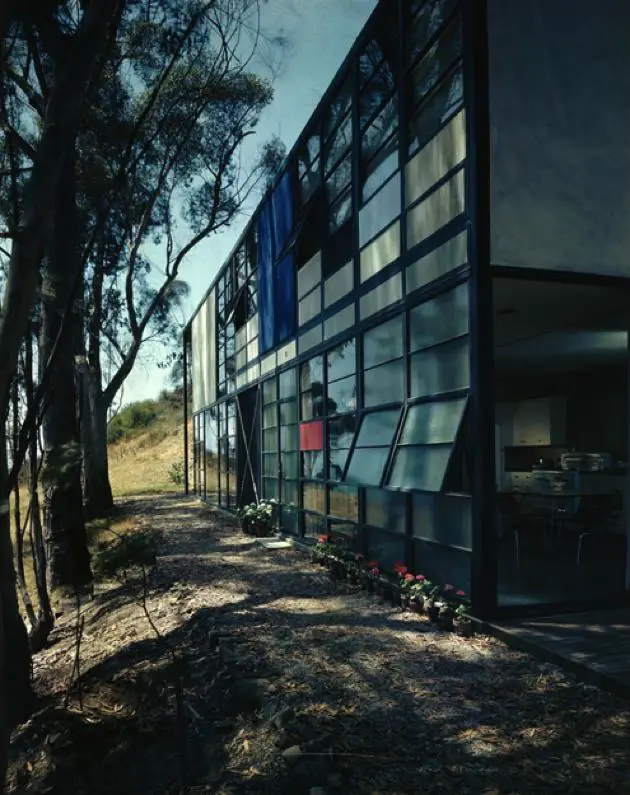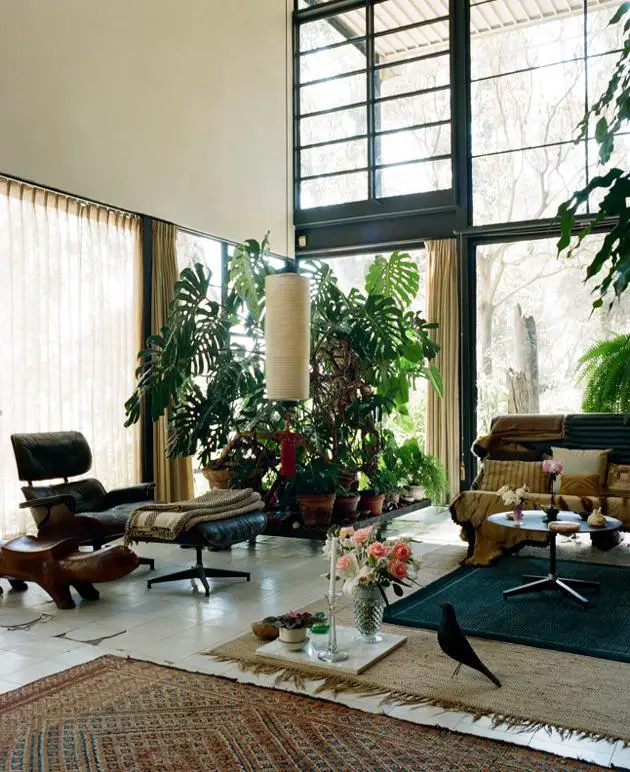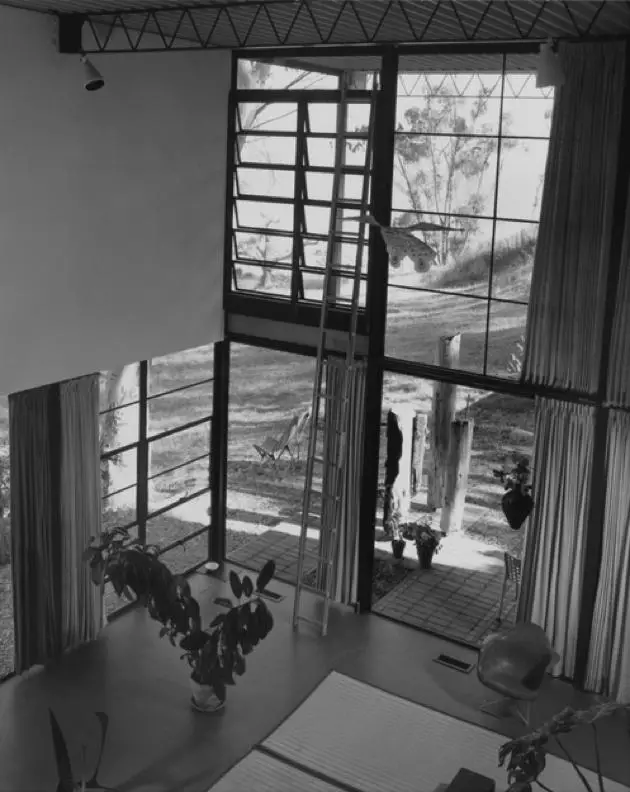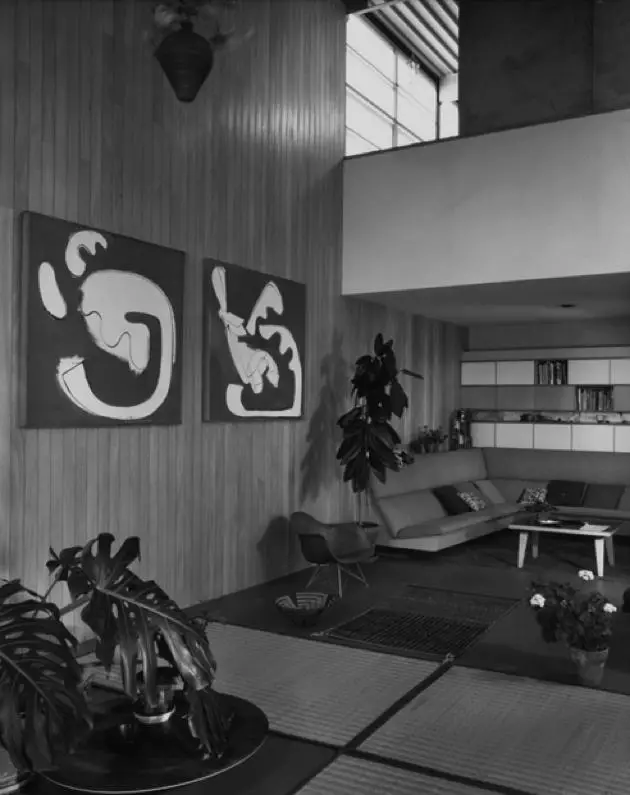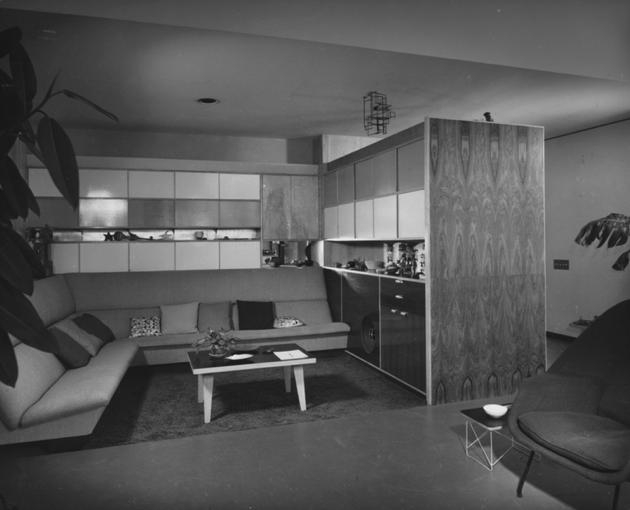Made a National Historic Landmark in 2006 and included on the top 10 all-time list of Los Angeles houses in 2008, it is clear that Case Study House #8, located in the Pacific Palisades neighborhood of LA, is highly considered to be a landmark in mid-20th century modern architecture and domestic design.
Initially incepted jointly by Charles Eames and Eero Saarinen, the ‘Eames House,’ as it came to be known, was later modified during the construction process by Eames and his wife Ray in order to maximize its spatial area.
Like so many other case study houses, #8 was built, almost ergonomically, as an attempt to create a living space that understands and accentuates the possibilities and eases of everyday domestic life.
For the Eames’s, who required a space that combined their professional lives with their domestic lives as most of their work preparations took place in the home, concentration and relaxation were continually mixed and permeated the fabric of family living. This is reflected in the home that they built together and Case Study House #8 was simply designed to seamlessly incorporate the often separate spheres of work life and domestic life within one single abode.
In order to achieve this harmony between work and relaxation, the house consists of two adjacent, double-height pavilions; one of which houses a residence while the other houses a studio and workshop space.
By laying out the house in this manner, the Eames’s were able to create a ‘separate-but-close’ space where one could work for a time and then switch effortlessly into comfortable domestic life by simply moving to another room within the house.
For the Eames’s, whose professional lives and domestic lives so often overlapped, Case Study House #8 functioned as an integral part of the living pattern of its occupants and was therefore ‘used’ in a very full and real sense; a notion often unusual in such an avant-garde domestic design.
The house itself was built accordingly a modular system that intended to make the construction more expansive rather than restrictive.
This resulted in spaces like the living room, which is basically cubic in shape, working as a core that links both the first and second floor areas that both open out onto the central room. This design creates a vast physical space that coherently links areas of the home that may otherwise exist separately.
Charles and Ray Eames chose to use industrial, prefabricated materials, including steel, glass, asbestos and cemesto board, for the entirety of the construction and uses these materials, their varying textures and colors, to ‘animate’ the buildings rectangular design.
After World War II, however, these ‘off-the-shelf’ materials were in short supply and it wasn’t until approximately three years after the house’s design was completed that the materials were delivered and this time was spent thoroughly searching for an appropriate plot of land on which to build the house.
The actual site of Case Study House #8, found on North Chautauqua Boulevard, was excavated in a hillside behind a row of tall eucalyptus trees; a quiet, calm location that enjoyed an unobstructed view of the ocean.
The feeling that the house had grown out of the hills and the secluded nature of the location exuded a sense that the Eames House had been created in its own little world, screened all around by high trees, foliage and rolling hills. This was the perfect location for such a harmonious home, which, despite being conceived as prototypical, was lovingly lived in and works as a highly personal reflection of the possibilities and coexistences of work and leisure; simple characteristics of Charles and Ray Eames’ unique was of life.

